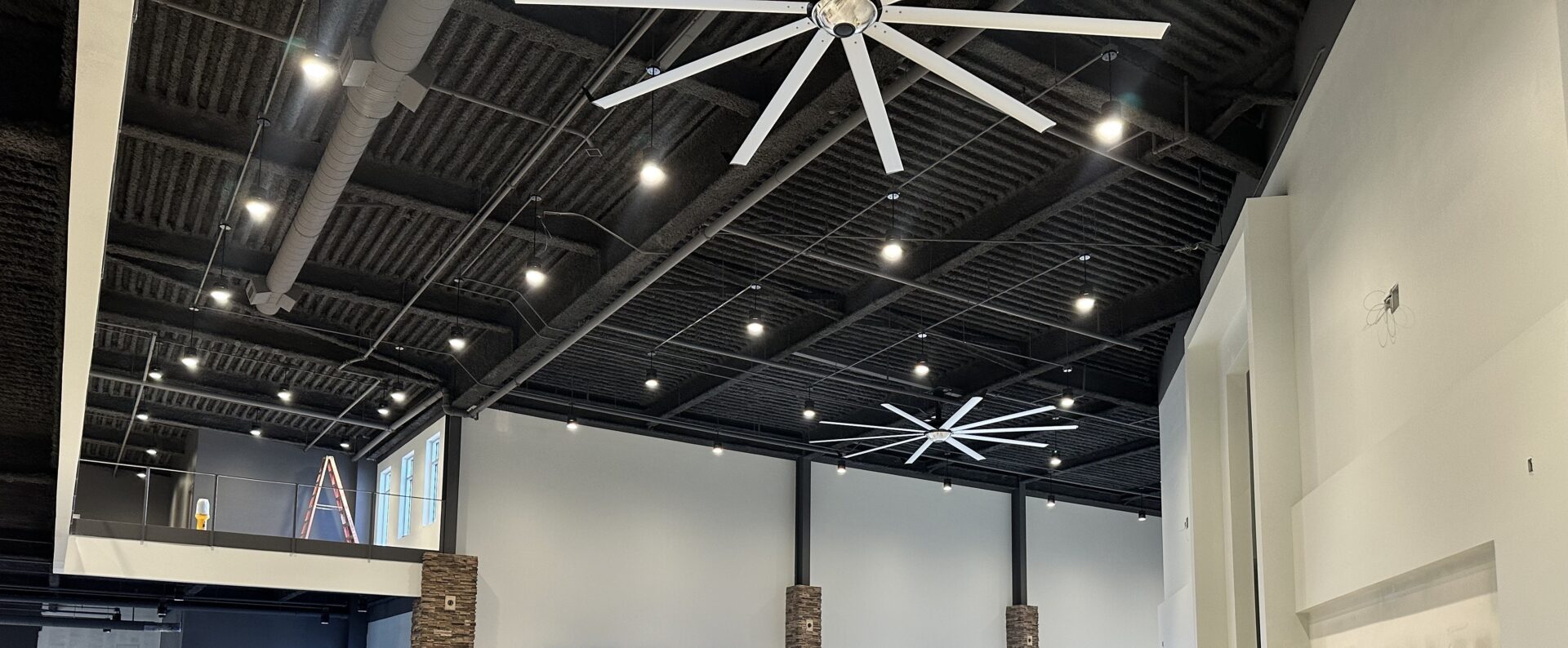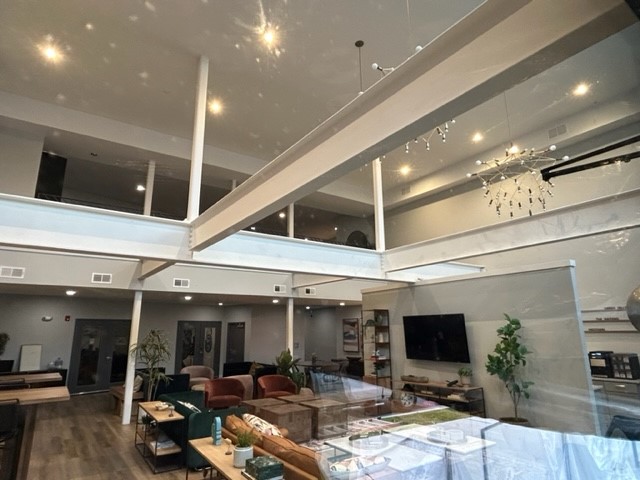Spray Applied Fireproofing
Spray-applied fireproofing protects structural steel and decking from extreme heat, providing up to four hours of fire resistance. While it also offers thermal, acoustic, and condensation-control benefits, its main purpose is to prevent structural failure during a fire. Available in fiber or cementitious forms, the latter is most commonly specified for its reliability and ease of application.






